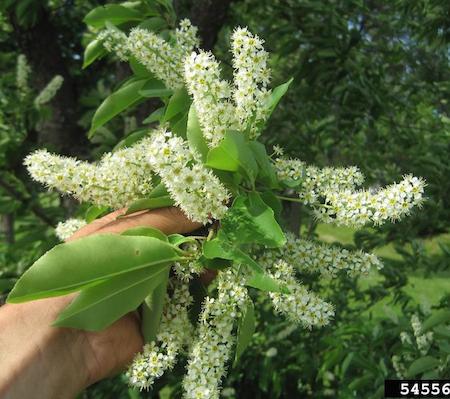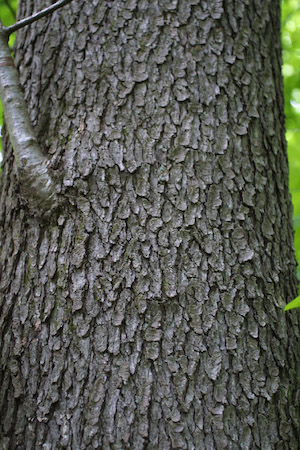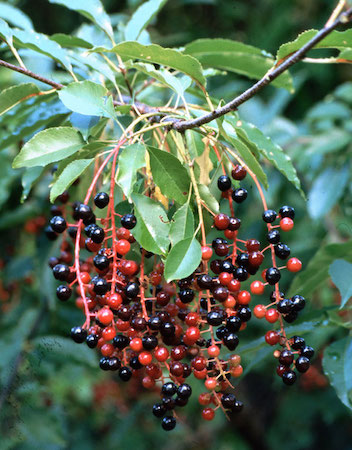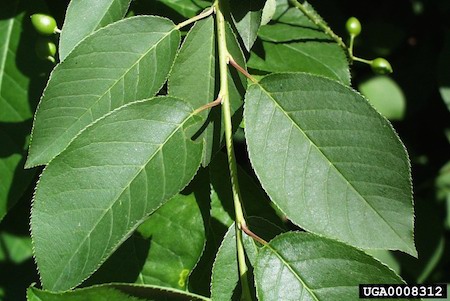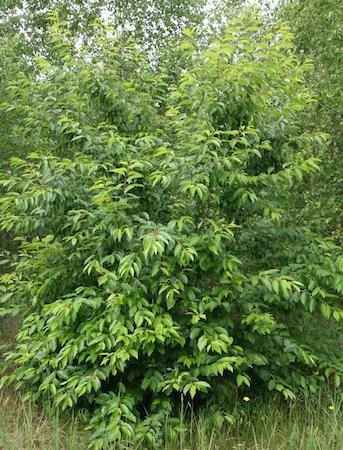Black Cherry
Specifications
- Latin (scientific) name: Prunus serotina. Serotina is Latin for “late,” referring to the relatively late-bearing fruit.
- Life expectancy: 125 years
- Height: 108 feet
- Circumference: 91 inches
-
The height and circumference measurements listed here are for the largest-known black cherry tree in Atlanta. This tree is located on private property.
-
Special characteristics:
This is not the ornamental cherry you see blooming all over town. In fact it’s hard to even see the blooms on this tree. Looking for a handful of tasty cherries? Well, you won't find them on this tree, either. The fruits are small, about 1/3 of an inch and bitter to the taste.
But the black cherry does have a couple of attributes that deserve respect. First, it is a highly prized wood sought after by any person who works with wood. Furniture, cabinet, and clock makers, and wood turners are a few that revere this wood. This wood glows a rich red when it is finished properly. The wood is not all that hard -- it’s about in the middle of the wood spectrum as far as strength -- but the straight-grained property of it calls us to work this wood.
The fruit is a major food source for wildlife. Birds flock to this tree along with the usual gang of rodents: grey and flying squirrels.
-
Annoyance factors:
The fruit. This is an inconvenient tree to have growing near parking areas. The natural citric acid of the berries will take the paint right off a car! There are ways to get around this problem, such as building a carport; or you might even pull a tarp over your car during fruit bearing season. Get one that is specially made for your model of car; it will go on and off much easier.
This tree has a "ratty" appearance.
-
Fun Facts:
This wood is the second most sought after wood, next to black walnut. One of the redeeming qualities of this wood is that it moves very little after it is cured. This is very important to precision instruments made with wood, like clocks. The best trees for lumber are the wild forest-grown trees. These trees yield the long straight trunks, as opposed to the knotty trees you see in yards.
Black cherry wood, bark, and leaves contain a small amouns of hydrocyanic acid. This is a highly toxic substance. It is not in large enough quantities to endanger humans, but it is harmful if eaten in large amounts by livestock.
The black cherry is in the rose family. Go figure. Peach and plums are also in this family.
-
Photo Credits:
Tree: Robert Vidéki, Doronicum Kft., Bugwood.org
Bark: Steven J. Baskauf, Vanderbilt University Bioimages
Leaves: Paul Wray, Iowa State University, Bugwood.org
Flowers: Rob Routledge, Sault College, Bugwood.org
Fruit: Gil Wojciech, Polish Forest Research Institute, Bugwood.org

